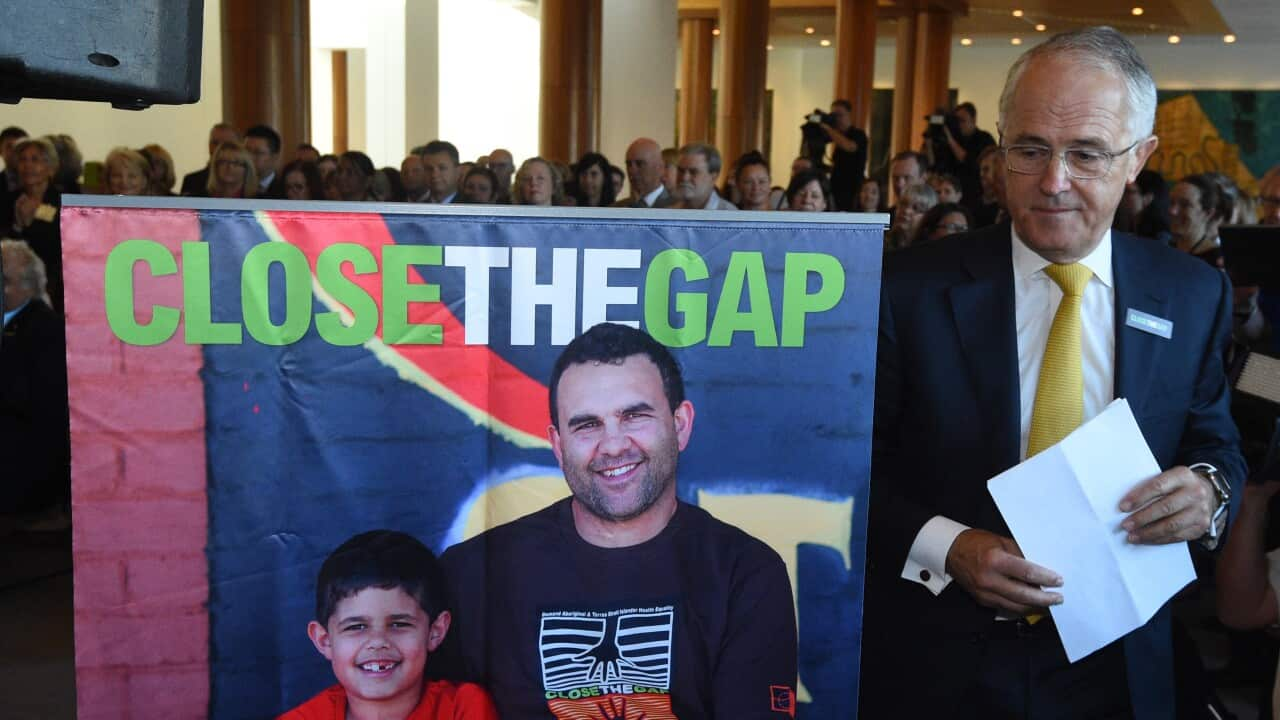This is the blunt assessment delivered by the Close the Gap Campaign 2017 Progress and Priorities Report released today to mark National Close the Gap Day.
Close the Gap co-chairs Dr Jackie Huggins and Patricia Turner say governments are failing to close the gap in health equality between Aboriginal and Torres Strait Islander people and other Australians in nearly every key measure.
"This has to change," they said.
Dr Huggins is also the co-chair of the National Congress of Australia's First Peoples. She says the report is extremely disappointing.
"When you have six targets not met, our infant mortality rate has in fact gone backwards. Our life expectancy is still 10 years less. Let me tell you that’s an optimal figure, because in remote communities and in regional communities it’s much more than that. We have life expectancy of people in their 30s and their 40s, unfortunately," she told NITV.
She says, systematically, we need to change the problem.
"What’s needed is that we all need to work in a far more coordinated approach. And that’s between the Aboriginal and Torres Strait Islander service providers and governments in particular."
The report identifies a number of key recommendations;
- State, territory and federal governments must meaningfully commit to closing the health gap by implementing co-ordinated partnerships with the Commonwealth
- Strategies must take account of the social and cultural determinants of health
- The Federal Government should initiate a national inquiry into racism in hospitals and other health care settings to help identify and counter racism’s impact on health care
The campaign's report comes as the Federal Government's Closing the Gap report last month revealed only one key target was on track out of seven of the Government's strategy to close the gap by 2020.
Federal Indigenous Health Minister Ken Wyatt says until health outcomes for Aboriginal and Torres Strait Islander people are equal to those of non-Indigenous people we cannot claim to have truly universal health system.
"This year’s Closing the Gap Report has mixed results and provides us with an opportunity to consider our course and reinvigorate our commitment to this fundamental task. We are making some strides in tackling Indigenous health issues, however, we have to do more," he said.
Mr Wyatt also used the day to remind parents of the importance of immunising children.
"It’s not just about protecting your child, it is about protecting other children who use child health centres or childcare. The more people who are vaccinated the fewer opportunities a disease has to spread."
Dr Huggins says Aboriginal peak bodies need to be informed, resourced and able to give proper and sound advice to governments to begin to see a difference.
"It’s something very familiar to us in terms of the Redfern Statement, which is a call for action around Closing the Gap, but also working with various organisations and peak bodies in our communities," she said.
"It’s really about getting smarter, working together and solving the problems because Aboriginal and Torres Strait Islander people have the solutions in their areas."
More than 1000 events are set to take place across the country to mark National Close the Gap Day to support the campaign to improve Indigenous health.
'Confronting' suicide rates linked to racism
Links between racism and higher rates of suicide among Indigenous Australians has mental health organisation Beyond Blue alarmed.
Dr Stephen Carbone, Research and Evaluation Leader with Beyond Blue, says the links between them are well established.
"There’s a lot of evidence around the harmful effects of racism. There’s research from Australia and internationally which demonstrates that people who are exposed to racism and particularly repeatedly, are at high risk of experiencing depression, anxiety conditions, and form there, at higher risk of suicide," he told NITV.
“The rates are quite confronting. Basically, the rate of suicide amongst ATSI is twice the rate of the general, non-indigenous community. Another statistic we always see is that the levels of psychological distress, which is somewhat a precursor, or some of the things that contributes to suicide risk are up to 3 times higher in ATSI people, than non-indigenous Australians.
Dr Carbonne says recent research highlighted the need for Indigenous led solutions, with strong government support, to deal with high suicide rates.
"The ATSI community needs to be leading the charge with support from the non-indigenous community."
"They really need to be resourced and supported to try and create the initiatives that they believe are important for their own community. And it sometimes needs to be at the community by community level."












